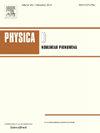端到端人工智能分析动态过程:一个线性基准测试
IF 2.9
3区 数学
Q1 MATHEMATICS, APPLIED
引用次数: 0
摘要
我们设想人工智能架构以端到端方式分析复杂的时间序列,这意味着时间序列的定量指标直接从数据中学习,而无需使用特定的人类思维算法。也就是说,我们挑战人工智能去学习那些特定的算法。我们在这个方向上提出了第一步,线性动态过程的基准测试。我们解决了从输出数据中学习线性(离散时间,稳定)动力系统的状态转移矩阵的特征值的典型任务。我们用从2到5维的随机矩阵中人工生成的数据来训练一个可扩展的LSTM神经网络。在无噪声数据下,训练后的网络的性能非常好(平均R2=0.955),特别是在估计主特征值方面,而在非主实特征值和生成矩阵的维数方面还有改进的空间。值得注意的是,该性能对测量噪声具有鲁棒性,并且在噪声标准差从10−6开始时,该网络优于相应AR过程的均方识别(后者给出无噪声数据的精确特征值)。本文章由计算机程序翻译,如有差异,请以英文原文为准。
End-to-end Artificial Intelligence to analyze dynamical processes: A linear benchmark test
We envisage AI architectures to analyze complex time series in an end-to-end fashion, meaning that the quantitative metrics of the time series are learned directly from data, without the use of specific human-thought algorithms. That is, we challenge AI to learn those specific algorithms. We present a first step in this direction, a benchmark test on linear dynamical processes. We tackle the archetypical task of learning the eigenvalues of the state-transition matrix of a linear (discrete-time, stable) dynamical system, from output data. We train a scalable LSTM neural network with artificially generated data from random matrices of dimension 2-to-5. With noise-free data, the performance of the trained network is very good (average ), especially in estimating the dominant eigenvalues, whereas there is space for improvements on non-dominant real eigenvalues and on the dimension of the generating matrix. Remarkably, the performance is robust to measurement noise and the network outperforms the mean-square identification of the corresponding AR process (the latter giving exact eigenvalues on noise-free data) at noise standard deviation starting from .
求助全文
通过发布文献求助,成功后即可免费获取论文全文。
去求助
来源期刊

Physica D: Nonlinear Phenomena
物理-物理:数学物理
CiteScore
7.30
自引率
7.50%
发文量
213
审稿时长
65 days
期刊介绍:
Physica D (Nonlinear Phenomena) publishes research and review articles reporting on experimental and theoretical works, techniques and ideas that advance the understanding of nonlinear phenomena. Topics encompass wave motion in physical, chemical and biological systems; physical or biological phenomena governed by nonlinear field equations, including hydrodynamics and turbulence; pattern formation and cooperative phenomena; instability, bifurcations, chaos, and space-time disorder; integrable/Hamiltonian systems; asymptotic analysis and, more generally, mathematical methods for nonlinear systems.
 求助内容:
求助内容: 应助结果提醒方式:
应助结果提醒方式:


